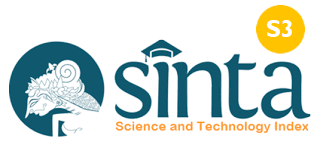Hambatan Pembelajaran Agama Hindu Terhadap Siswa Tuna Netra di Panti Mahatmia
Keywords:
Learning Agama Hindu; Tuna Netra; Panti MahatmiaAbstract
Education is the most important thing controlled by humans from generation to generation. Without education it will break the blindness of knowing the universe. Education will not recognize people with disabilities or the normal, the fulcrum is the will to learn. This has become the spirit of the students in Mahatmia orphanage to always study knowledge, including knowledge about the teachings of Hinduism. Surely there will be obstacles in the implementation of Education carried out at the Mahatmia Orphanage. The approach used in this study is a qualitative approach with the type of qualitative research sourced from primary data, namely members of the Mahatmia orphanage and Hindu religious teaching staff, while Primary data sources are related books and articles. To make it easier for researchers to obtain data, interview and literature data collection methods are used which are then analyzed and presented in the form of qualitative descriptions. The results of the study can be classified into two things: 1) The obstacles of learners who are blind people will naturally experience limitations in understanding the material presented. 2) the obstacle of the teaching staff is of course adjusting the learning methods applied so as to provide a correct understanding to the blind people at the Mahatmia Orphanage properly about the teachings of Hinduism. Through these obstacles, of course, the learning method becomes the main key in improving future learning so that religious learning, especially Hinduism, can be carried out effectively.
References
Iqbal, Hasan. (2002). Pokok-pokok Metodelogi Penelitian dan Aplikasi. Bandung; Ghali Indonesia.
Gelgel, dkk. (1996). Sejarah Kebudayaan, Direktur Jenderal Bimbingan Hindu dan Budha
Hasbullah. (2011). Dasar-dasar Ilmu Pendidikan. Jakarta: PT Raja Grafindo Persada
Hadari Nawawi. (2012). Metode Penelitian Bidang Sosial. Yogyakarta: Gajah Mada University Press
Musti Roza Lina. (2012). Kondisi Fisik Panti Asuhan Anisa’ dan SMK Dhuada dalam Menunjang Keberhasilan Pendidikan di Kecamatan Nanggola Kota Padang. Jurnal. Padang: Sekolah Tinggi Keguruan dan Ilmu Pendidikan (STKIP) PGRI Sumatra Barat (Online) http://jurnal.stkip-pgrisumbar.ac.id_16-31-1-SM.pdf.
Mulyan, Dedy. (2001). Metodelogi Penelitian Kualitatif Paradigma Baru Ilmu Komunikasi Dan Ilmu Sosial Lainnya. Bandung: PT Remaja Posda Karya Anwar, Desy. 2003.Kamus Lengkap Bahasa Indonesia. Surabaya: Amelia.
Palmer, E. Richard. (2003). Hermeneutika Teori Baru Mengenal. Interpretasi. Yogyakarta: Pustaka Pelajar
Pandit, Bansi. (2005). Pemikiran Hindu, Pokok-pokok Pikiran Agama Hindu Dan Filsafatnya (IGA Dewi Paramita Penerjamah). Surabaya; paramita.
Poerwasadarminta, WJS. (1986). Kamus Besar Bahasa Indonesia, Yogyakarta:Balai Pustaka
Rustini, Ni Nengah. (2007). Konversi Agama Dan Pendidikan Agama Hindu Di Desa Pakraman Muntigunung, Kabupaten Karangasem. Denpasar: Skripsi IHDN Denpasar
Downloads
Published
How to Cite
Issue
Section
License
An author who publishes in the Cetta : Jurnal Ilmu Pendidikan agrees to the following terms:
- Author retains the copyright and grants the journal the right of first publication of the work simultaneously licensed under the Creative Commons Attribution-ShareAlike 4.0 License that allows others to share the work with an acknowledgement of the work's authorship and initial publication in this journal
- Author is able to enter into separate, additional contractual arrangements for the non-exclusive distribution of the journal's published version of the work (e.g., post it to an institutional repository or publish it in a book) with the acknowledgement of its initial publication in this journal.
- Author is permitted and encouraged to post his/her work online (e.g., in institutional repositories or on their website) prior to and during the submission process, as it can lead to productive exchanges, as well as earlier and greater citation of the published work (See The Effect of Open Access).
Read more about the Creative Commons Attribution-ShareAlike 4.0 Licence here: https://creativecommons.org/licenses/by-sa/4.0/.





